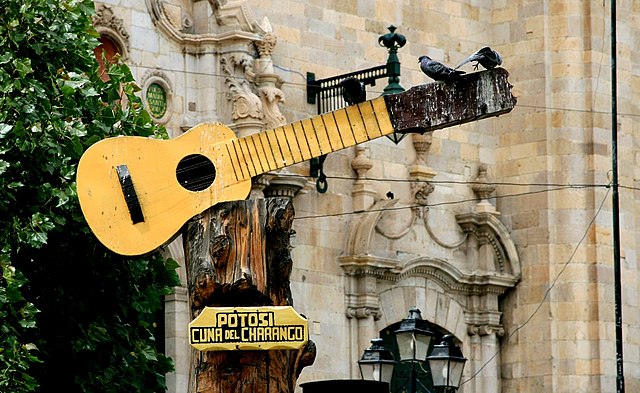The charango is a small Andean stringed instrument of the lute family, from the Quechua and Aymara populations in the territory of the Altiplano in post-Colonial times, after European stringed instruments were introduced by the Spanish during colonialization. The instrument is widespread throughout the Andean regions of Bolivia, Peru, Ecuador, northern Chile and northwestern Argentina, where it is a popular musical instrument that exists in many variant forms.
A modern charango
A sign in Potosi, Bolivia, in the style of a charango with the words 'Cuna del Charango' (Birthplace of the Charango).
A traditional charango made of armadillo, today superseded by wooden charangos, in Museu de la Música de Barcelona
Charango in the Horniman museum, London, UK.
Armadillos are New World placental mammals in the order Cingulata. They form part of the superorder Xenarthra, along with the anteaters and sloths. 21 extant species of armadillo have been described, some of which are distinguished by the number of bands on their armor. All species are native to the Americas, where they inhabit a variety of different environments.
Image: Cingulata 2
Image: Pink Fairy Armadillo (Chlamyphorus truncatus) (cropped)
Nine-banded armadillo skeleton.
Three-banded armadillo skeleton on display at the Museum of Osteology








